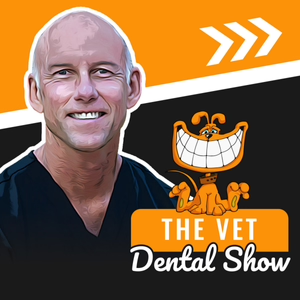
The Vet Dental Show
Brett Beckman
All episodes
Best episodes
Seasons
Top 10 The Vet Dental Show Episodes
Goodpods has curated a list of the 10 best The Vet Dental Show episodes, ranked by the number of listens and likes each episode have garnered from our listeners. If you are listening to The Vet Dental Show for the first time, there's no better place to start than with one of these standout episodes. If you are a fan of the show, vote for your favorite The Vet Dental Show episode by adding your comments to the episode page.
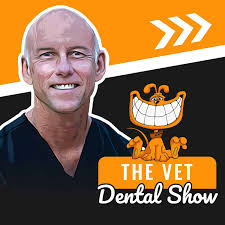
Episode 167 - Feline Stomatitis in Practice: What Every Vet Needs to Know
The Vet Dental Show
04/09/25 • 12 min
🔗 Advance Your Veterinary Dentistry Mastery Ready to grow your confidence and capability in veterinary dentistry? The Veterinary Dental Practitioner Program offers in-depth training to equip you with the skills needed for complex dental cases. Request your invitation today 👉 https://ivdi.org/inv
Looking for even more tools to sharpen your knowledge? Browse Dr. Beckman’s wide range of courses and resources tailored for veterinary professionals 👉 https://veterinarydentistry.net/
🎙️ Host: Dr. Brett Beckman, DVM, FAVD, DAVDC, DAAPM
In this episode of The Vet Dental Show, Dr. Brett Beckman dives deep into Feline Stomatitis — a painful and often misunderstood condition in cats. Discover how to accurately diagnose this disease, when to refer for full-mouth extractions, and the critical pain management strategies you need to know.
🔍 What You’ll Learn in This Episode✅ How to recognize true feline stomatitis and differentiate it from similar conditions ✅ Why biopsy is rarely necessary when classic signs are present ✅ The importance of experienced surgical technique for full-mouth extractions ✅ Initial and long-term pain management options including prednisolone, interferon, and cryotherapy ✅ What to do when a case doesn’t respond to standard treatment ✅ The real risks of partial extractions and how to avoid them
💡 Key Takeaways✔️ Accurate diagnosis is key — not all oral inflammation is stomatitis ✔️ Early and aggressive pain control is essential ✔️ Only experienced practitioners should perform extractions in these cases ✔️ Misdiagnosed or incomplete treatment can lead to worsening pain ✔️ Advanced therapies can make a difference for refractory patients
🔗 Links and Resources for Veterinary Professionals🔗 Apply to the Veterinary Dental Practitioner Program — https://ivdi.org/inv 🔗 Explore Dr. Beckman’s courses and resources — https://veterinarydentistry.net/
📩 Have questions or thoughts? Drop them in the comments Make sure to like, subscribe, and turn on notifications so you never miss an episode of The Vet Dental Show. 🦷🐱🐶
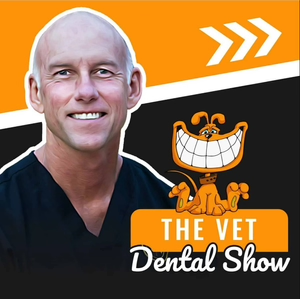
Episode 168 - To Extract or Not? Managing Crown Fractures & Pulp Issues
The Vet Dental Show
04/16/25 • 6 min
🔗 Advance Your Veterinary Dentistry Skills Join the Veterinary Dental Practitioner Program – the ultimate training to help you confidently diagnose and treat dental conditions in practice. Apply now and take the next step in your veterinary dentistry journey! 👉 https://ivdi.org/inv
Want to keep learning? Explore Dr. Beckman’s full collection of courses and resources to sharpen your skills and elevate your care. 👉 https://veterinarydentistry.net/
🎙️ Host: Dr. Brett Beckman, DVM, FAVD, DAVDC, DAAPM
In this episode of The Vet Dental Show, Dr. Brett Beckman shares a previously recorded session covering critical decision-making around complicated crown fractures, non-vital teeth, and discolored teeth in dogs. This episode is packed with real-world insights that will help you act fast and choose the right treatment options.
What You’ll Learn in This Episode: ✅ Why “wait and see” is never the right call for exposed pulp ✅ The difference between extrinsic and intrinsic staining ✅ How to determine tooth vitality from radiographs ✅ What a widened pulp cavity really means ✅ The risks of chronic pulpitis and necrosis ✅ When to extract vs. refer for a root canal
Key Takeaways: ✔️ Teeth with pulp exposure always require treatment ✔️ Intrinsically discolored teeth are likely non-vital ✔️ Subtle radiographic changes can indicate necrosis ✔️ Chronic pulpitis may still be damaging even if painless ✔️ Recognizing early signs helps avoid severe complications
Links & Resources for Veterinary Professionals: 🔗 Apply to the Veterinary Dental Practitioner Program – https://ivdi.org/inv 🔗 Explore Dr. Beckman’s courses and resources – https://veterinarydentistry.net/
📩 Have questions or comments? Drop them below! Don’t forget to like, subscribe, and turn on notifications for more practical veterinary dentistry content. 🦷🐾
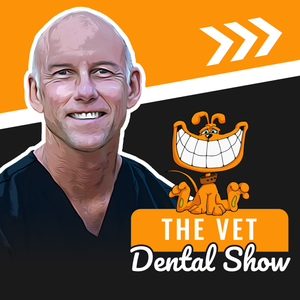
Ep 144 - What Are the Key Considerations for Root Canals, Extractions, and Dentigerous Cysts in Veterinary Dentistry?
The Vet Dental Show
09/18/24 • 14 min
Ep 144 - What Are the Key Considerations for Root Canals, Extractions, and Dentigerous Cysts in Veterinary Dentistry?
Ever wondered about the intricacies of root canals, when to extract teeth, and how to handle dentigerous cysts in veterinary patients? Discover the answers in this informative episode!
Quick Summary: In this episode, Brett Beckman, a board-certified veterinary dentist, addresses various dental issues in veterinary practice. He covers topics such as root canal training, client education for tooth extractions, monitoring after root canals, handling fractured deciduous teeth in puppies, and managing dentigerous cysts in brachycephalic breeds.
Guest, Cast, and Crew Information:
1. Host: Brett Beckman, Board Certified Veterinary Dentist
2. Sponsored by: IVDI
Main Talking Points:
1. Availability and challenges of root canal training for general practitioners
2. Client education strategies for tooth extractions
3. Post-root canal monitoring and expectations
4. Handling fractured deciduous teeth in puppies
5. Identifying and managing dentigerous cysts in brachycephalic breeds
Interesting Quotes:
1. "I used to tell people 10 years ago, 12 years ago, whatever it may be, that I've been doing root canals after becoming a specialist for 10 years. And I think I'm just now getting good."
2. "If there's no radiographic changes after that month or multiple months that it's taken for that to happen, then there's a chance that they won't [need extraction]."
Timestamps:
1. **[00:00]** – Introduction and sponsorship information
2. **[01:30]** – Discussion on root canal training availability
3. **[03:45]** – Client education for tooth extractions
4. **[07:30]** – Post-root canal monitoring and expectations
5. **[11:00]** – Handling fractured deciduous teeth in puppies
6. **[12:30]** – Identifying and managing dentigerous cysts
Key Points Summary:
1. Root canal training is not available for general practitioners due to the high learning curve and time investment required.
2. Effective client education, including the use of dental images, is crucial for explaining the need for tooth extractions.
3. Post-root canal care often involves crown placement and regular radiographic check-ups.
4. Fractured deciduous teeth in puppies should be extracted promptly to prevent infection and discomfort.
5. Dentigerous cysts are common in brachycephalic breeds with missing premolars and should be addressed early to prevent bone destruction.
Affiliate & Sponsor Links:
1. Sponsored by: Veterinary Dental Practitioner Program
2. Link: ivdi.org/inv
(Veterinary dentistry, root canal therapy, tooth extraction, client education, dentigerous cysts, brachycephalic breeds, dental radiographs, veterinary dental procedures)
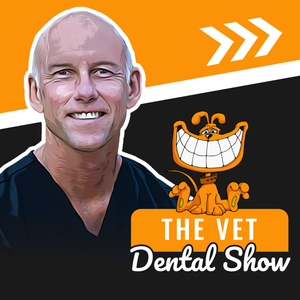
07/31/24 • 11 min
In this episode of the Vet Dental Show, Dr. Brett Beckman, Board Certified Veterinary Dentist, answers listener questions about managing gingival hyperplasia in boxers and other brachycephalic breeds. Dr. Beckman discusses the importance of radiographs before treatment, when to refer complex cases, and the nuances of dealing with epulides. Tune in for expert advice and practical tips to enhance your veterinary dental practice.
Guest, Cast, and Crew Information- Host: Dr. Brett Beckman, Board Certified Veterinary Dentist
- Sponsor: Veterinary Dental Practitioner Program
- Introduction: Overview of the episode and sponsorship details.
- Listener Question: Mandy's question on treating gingival hyperplasia in boxers.
- Radiographs Importance: The necessity of taking radiographs before treatment.
- Treatment Approach: Steps to handle gingival hyperplasia and epulides.
- When to Refer: Guidance on referring complex brachycephalic cases.
- Histopathology: The importance of submitting tissue for histopathology.
- Maintenance and Follow-Up: Managing recurrent gingival hyperplasia.
- "You do not want to go in and start removing tissue without first taking radiographs."
- "Brachycephalic breeds often have dense cortical bone, making extractions more challenging."
- "Gingival hyperplasia will come back and requires maintenance every 6 to 18 months."
- 00:00 - 00:30: Introduction
- 00:31 - 02:00: Listener Question from Mandy
- 02:01 - 04:00: Importance of Radiographs
- 04:01 - 06:00: Treatment Approach for Gingival Hyperplasia
- 06:01 - 08:00: When to Refer Complex Cases
- 08:01 - 10:00: Histopathology and Tissue Submission
- 10:01 - 11:30: Maintenance and Follow-Up
- 11:31 - 13:00: Summary and Conclusion
[Veterinary dentistry, gingival hyperplasia, brachycephalic breeds, radiographs, dental extractions, epulides, histopathology, veterinary dental training, Dr. Brett Beckman]
Key Points Summary- Radiographs Importance: Always take full mouth radiographs before treating gingival hyperplasia.
- Treatment Approach: Remove affected teeth and contour tissue for closure.
- Referral Guidance: Refer complex brachycephalic cases to specialists.
- Histopathology: Submit all excised tissue for pathology to ensure an accurate diagnosis.
- Maintenance: Regular follow-up and maintenance are necessary for managing recurrent gingival hyperplasia.
- IVDI.org/inv - Submit your request for an invitation to the Veterinary Dental Practitioner Program.
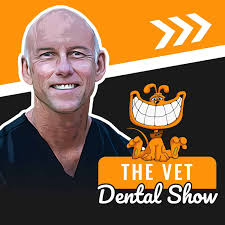
Episode 159 - Veterinary Dentistry: When to Extract, Restore, or Refer?
The Vet Dental Show
02/12/25 • 12 min
🔗 Exclusive Offer for Podcast Listeners! Get a huge discount on Dr. Brett Beckman’s Composite Restoration and Bonding Course! Visit https://ivdi.org/restore and use promo code podcast at checkout!
Apply to the Veterinary Dental Practitioner Program for specialized training today! https://ivdi.org/inv
------------------------------------------
Host: Dr. Brett Beckman, DVM, FAVD, DAVDC, DAAPM
Dr. Brett Beckman, a board-certified veterinary dentist, shares expert insights into diagnosing and treating common dental fractures in veterinary practice. Using real-world case examples, he discusses when to extract, when to refer, and how to educate clients about their pet’s dental care.
What You’ll Learn in This Episode: ✅ How to diagnose and assess common dental fractures ✅ The decision-making process: extraction vs. root canal treatment ✅ Understanding tooth resorption and its impact on treatment options ✅ Techniques for odontoplasty, bonding, and composite restorations ✅ Managing complex extractions, including ankylosis and periodontal disease
Key Takeaways: Slab fractures with pulp exposure require treatment—either root canal or extraction Tooth resorption may indicate endodontic disease, requiring extraction Restoration techniques must consider chewing trauma and long-term success Complex extractions should be referred when necessary to ensure the best outcome Client education is essential to help pet owners make informed decisions
Links & Resources for Veterinary Professionals: Apply to the Veterinary Dental Practitioner Program – https://ivdi.org/inv
Get a huge discount on Dr. Brett Beckman’s Composite Restoration and Bonding Course! Visit https://ivdi.org/restore and use promo code podcast at checkout!
📩 Have questions or comments? Drop them below! Don’t forget to like, subscribe, and turn on notifications for more expert veterinary dentistry content!
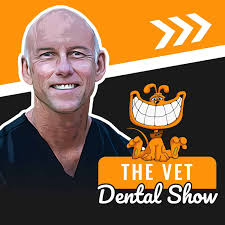
Episode 175 - Periapical Lucency vs Abscess in Dogs: Treatment Tips & Safe Dental Practices
The Vet Dental Show
06/04/25 • 10 min
Start your journey to excellence in veterinary dentistry! Request your invitation to the Veterinary Dental Practitioner Program at: https://ivdi.org/inv Gain hands-on training, evidence-based protocols, and the confidence to deliver superior dental care.
-----------------------------------------------------------
Host: Dr. Brett Beckman, DVM, FAVD, DAVDC, DAAPM
Welcome Back to The Vet Dental Show! This week, we’re featuring a special episode packed with clinical pearls from past content that remains highly relevant for everyday practice. Whether you're a veterinarian or a technician, you'll gain practical insights to elevate your dental care standards.
On this episode, Dr. Brett Beckman, a Board Certified Veterinary Dentist, addresses essential questions from veterinary professionals about periapical lucency, abscesses, safe dental toys, digital radiography techniques, and patient monitoring during dental procedures.
What You’ll Learn in This Episode: ✅ The clinical difference between periapical lucency and an abscess ✅ Best practices for treating infected fourth premolars ✅ When and why to use antibiotics in dental extractions ✅ Tips for effective dental radiography in small dogs ✅ Safe and unsafe chew toys for dental health ✅ How to monitor anesthetized patients during radiography ✅ Where to source quality cadaver heads for training ✅ Intubation techniques for small-statured practitioners
Key Veterinary Dentistry Takeaways: ✅ Periapical lucency signifies bone loss without active pus drainage; abscesses involve active infection ✅ Extraction and thorough debridement are essential for both conditions ✅ Antibiotics are reserved for cases with active infection or facial wounds ✅ Sensor size limitations can be overcome with strategic tube head positioning ✅ Avoid hard chews like antlers and Nylabones; opt for KONGs and VOHC-approved items ✅ Monitoring can begin with minimal setup and ramp up as the procedure progresses ✅ Solo intubation is viable with good positioning and visibility techniques
Final Call to Action and Resource Links: Start your journey to excellence in veterinary dentistry! Request your invitation to the Veterinary Dental Practitioner Program at: https://ivdi.org/inv
For more in-depth training, visit: https://www.veterinarydentistry.net
Questions or insights? Drop them in the comments!
-----------------------------------------------------------
veterinary dentistry abscess treatment periapical lucency in dogs canine dental infection management safe chew toys for dogs dental health veterinary dental radiography tips dental x-rays for small dogs VOHC approved dental products monitoring anesthesia during dental x-rays dog tooth extraction protocol veterinary dentistry training veterinary dental practitioner program veterinary oral surgery techniques dental debridement in dogs vet dentistry continuing education vet tech dental training tips
#veterinarydentistry #periapicallucency #dentalabscess #vetdentaltips #safechewtoys #dentalradiography #vetxray #VOHC #vetdentist #animaldentistry #veterinarysurgery #monitoringanesthesia #vettechtraining #vetdentaleducation
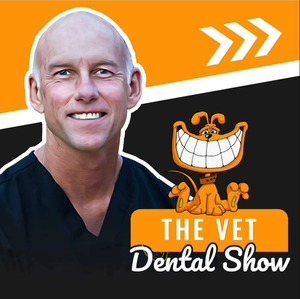
Episode 172 - Hyaluronic Acid in Veterinary Dentistry | Interview with Dr. Brian Song, MD (Part 1)
The Vet Dental Show
05/14/25 • 20 min
Learn Periodontal Techniques That Save Teeth: Register Now for Our Brand New Course! https://veterinarydentistry.net/veterinary-periodontal-disease-management/ Boost your clinical outcomes and learn practical skills in root planing, curettage, and more—designed for general practitioners.
More CE & Dental Resources: Explore Dr. Beckman’s full CE library at https://veterinarydentistry.net
------------------------------------------------------------------------------
Host: Dr. Brett Beckman, DVM, FAVD, DAVDC, DAAPM Guest: Dr. Brian Song, MD – Founder & CEO of PerioVive
Welcome to The Vet Dental Show – the go-to podcast for veterinary professionals looking to elevate their skills and outcomes in veterinary dentistry.
In this episode, Dr. Brett Beckman sits down with Dr. Brian Song, a physician and biotech expert, to discuss the science and clinical relevance of hyaluronic acid (HA) in veterinary periodontal treatment. Dr. Song introduces PerioVive, a veterinary-formulated HA gel designed to enhance tissue regeneration, periodontal healing, and bone support in dogs and other companion animals.
What You’ll Learn in This Episode: ✔️ How hyaluronic acid supports tissue repair in periodontal disease ✔️ The biological mechanism of HA in wound healing and inflammation control ✔️ Why PerioVive is a valuable tool for treating periodontal pockets ✔️ How HA inhibits epithelial downgrowth and encourages new attachment ✔️ Where PerioVive fits into root planing, curettage, and bone grafting ✔️ The difference between human and veterinary use of HA products ✔️ Clinical comparisons with Doxirobe and applications in infra-bony defects
Key Veterinary Dentistry Takeaways: ✅ Hyaluronic acid improves bone, ligament, and connective tissue regeneration ✅ PerioVive is easy to apply and integrates with common periodontal workflows ✅ Ideal for use after subgingival curettage and root planing ✅ Reduces recurrence by preventing unwanted epithelial growth ✅ Backed by extensive canine and human research in periodontal therapy ✅ Useful adjunct in general practice to save borderline teeth
Learn Periodontal Techniques That Save Teeth: Register Now for Our Brand New Course! https://veterinarydentistry.net/veterinary-periodontal-disease-management/ Boost your clinical outcomes and learn practical skills in root planing, curettage, and more—designed for general practitioners.
More CE & Dental Resources: Explore Dr. Beckman’s full CE library at https://veterinarydentistry.net
Questions or insights? Drop them in the comments! Like this episode, subscribe, and join us weekly for more real-world strategies in veterinary dental care.
-------------------------------------------
veterinary dentistry, hyaluronic acid veterinary, PerioVive, canine periodontal disease, periodontal regeneration, veterinary dental podcast, vet dental tools, periodontal pocket treatment for dogs, HA gel for pets, root planing in veterinary dentistry, gum disease in dogs, advanced pet dentistry, dental CE for veterinarians, regenerative medicine in vet practice
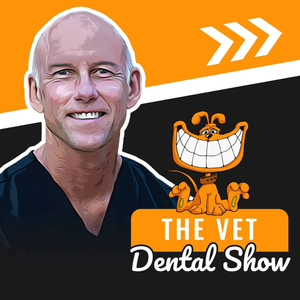
Episode 154 - Recognizing and Treating CUPS in Dogs
The Vet Dental Show
01/01/25 • 27 min
Dr. Beckman's International Veterinary Dentistry Institute offers courses in all areas of vet dentistry.
Online & Live Courses for Vets and Techs https://veterinarydentistry.net/
To register for the January 12th Training: https://ivdi.org/vdp
In this episode of The Vet Dental Show, Dr. Brett Beckman, a board-certified veterinary dentist, dives into recognizing and treating Canine Chronic Ulcerative Stomatitis (CCUS)—a painful and often overlooked condition in dogs. Learn how to spot subtle signs of oral discomfort, such as behavioral changes and resistance to oral exams, and understand the critical steps for diagnosis and treatment. Dr. Beckman also discusses pain management strategies and when to consider referrals for complex cases.
Podcast Details Host: Dr. Brett Beckman, DVM, FAVD, DAVDC, DAAPM
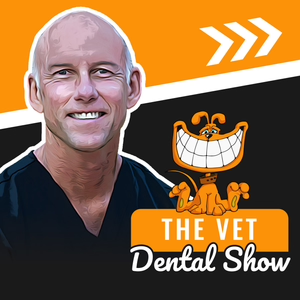
Ep 140 - Mastering Veterinary Dentistry: An In-depth Discussion with Dr. Trudi Bowden - Part 2
The Vet Dental Show
08/21/24 • 14 min
In this episode of the Vet Dental Show, Dr. Brett Beckman continues his insightful conversation with Dr. Trudi Bowden. Following the success of part one, this episode dives deeper into the structure of dental practices, the importance of having a dedicated dentistry lead, and practical advice for implementing dental consultations in a veterinary setting. Dr. Bowden shares her journey of expanding dental services, overcoming challenges, and the critical role of passion and confidence in achieving success in veterinary dentistry.
Guest, Cast, and Crew Information- Host: Dr. Brett Beckman, Board Certified Veterinary Dentist
- Guest: Dr. Trudi Bowden, IVDI Instrcutor
- Sponsor: Veterinary Dental Practitioner Program
- Introduction: Overview of the episode and a recap of part one.
- Importance of a Dedicated Dentistry Lead: The role of having a go-to person for dental consultations in a practice.
- Free Dental Consultations: How Dr. Bowden used free 30-minute dental consultations to build trust and expand dental services.
- Client Education and Marketing: Strategies for communicating the value of dental services to clients.
- Overcoming Challenges: Handling price objections, building confidence, and the impact of client education on practice success.
- Training and Mentorship: The importance of training support staff and mentoring others to maintain high standards in veterinary dentistry.
- Growth and Demand: The growing demand for quality dental care and the challenges of managing a busy dental clinic.
- Closing Remarks: Encouragement for veterinarians to persevere through challenges and continue improving their dental skills.
- "Passion without confidence or experience is difficult, but when combined, it makes all the difference."
- "We were price shopping, but the passion and commitment led to an 80% success rate in scheduling dental procedures."
- "Failure is not a failure; it's just a reason to get better."
- 00:00 - 00:30: Introduction and recap of part one
- 00:31 - 02:00: Importance of a dedicated dentistry lead in practice
- 02:01 - 03:30: Implementing free dental consultations to build client trust
- 03:31 - 05:00: Client education and how to market dental services
- 05:01 - 06:30: Overcoming challenges in communicating the value of dental services
- 06:31 - 08:00: Training support staff and mentoring in veterinary dentistry
- 08:01 - 10:00: Growth in demand for quality dental care and managing a busy clinic
- 10:01 - 12:00: Encouragement and closing remarks
[Veterinary dentistry, dental consultations, client education, veterinary dental practitioner, practice growth, veterinary mentorship, overcoming challenges in veterinary practice, Dr. Brett Beckman, Dr. Trudy Bowden]
Key Points Summary- Introduction: Welcoming listeners, recap of part one, and introduction to part two.
- Dedicated Dentistry Lead: The importance of having a specialised dentist within a practice.
- Free Consultations: Using free consultations to build trust and expand dental services.
- Client Education: Strategies for effectively communicating the importance of dental care to clients.
- Overcoming Challenges: Building confidence, handling price objections, and improving client conversion rates.
- Training and Mentorship: The significance of training support staff and mentoring other veterinarians.
- Growth and Demand: The rising demand for quality dental care and the challenges of managing a full clinic.
- Encouragement: Inspiring words for veterinarians to keep improving their skills and overcoming obstacles.
- IVDI.org/INV - Submit your request for an invitation to the Veterinary Dental Practitioner Program.
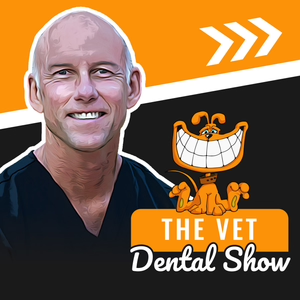
Ep 147- Veterinarians, Curious about how to prevent mandibular fractures during extractions?
The Vet Dental Show
10/16/24 • 12 min
Quick Summary: In this episode of the Vet Dental Show, Dr. Brett Beckman shares practical advice for veterinary dental teams. Topics covered include using mouth gags during surgery, managing incisor extractions, handling complex tooth extractions, and using tools like the Vetome. Dr. Beckman also discusses the importance of choosing appropriate methods for specific malocclusions and the pros and cons of referrals versus in-house procedures.
Guest, Cast, and Crew Information:
- Host: Dr. Brett Beckman, Board Certified Veterinary Dentist
- Guest: None
- Sponsored by: IVDI
Main Talking Points:
- Using syringe barrels as mouth gags in different-sized animals.
- Tips for incisor extractions and dealing with difficult suture closures.
- Managing extraction of complex teeth, especially lateral incisors.
- The value of the Vetome tool for easy extractions.
- Treating class II malocclusion with mandibular canine extractions.
- Why the mandibular second molar extraction can be particularly challenging.
Interesting Quotes:
- "When it comes to extractions, slow, deliberate movements ensure better control and prevent fractures."
- "The Vetome has been a game-changer in how we approach extractions—efficient, precise, and effective."
Timestamps:
- [00:00] – Introduction and overview.
- [01:10] – Discussion on using mouth gags and practical techniques.
- [04:05] – Tips and tricks for incisor extractions and managing dehiscence.
- [07:30] – Importance of the Vetome tool for easy and efficient extractions.
- [10:20] – Treating class II malocclusions and mandibular canine extractions.
- [12:50] – Managing the mandibular second molar extraction challenges.
(Veterinary dentistry, mouth gags, tooth extraction, incisor extraction, Vetome, dental surgery tools, class II malocclusion, canine tooth extraction, veterinary dental procedures, periodontal disease)
Key Points Summary:
- Use syringe barrels as mouth gags for different animal sizes, ensuring comfort.
- Avoid flaps in simple incisor extractions; they often lead to dehiscence.
- The Vetome is an invaluable tool for efficient extractions in challenging cases.
- Class II malocclusions can be treated with mandibular canine extractions if other treatments are not viable.
- The mandibular second molar presents specific extraction challenges due to its deep placement and thick bone structure.
Affiliate & Sponsor Links:
- Link: IVDI.org/inv
Show more best episodes

Show more best episodes
FAQ
How many episodes does The Vet Dental Show have?
The Vet Dental Show currently has 138 episodes available.
What topics does The Vet Dental Show cover?
The podcast is about Dentistry, Dogs, Cats, Podcasts and Education.
What is the most popular episode on The Vet Dental Show?
The episode title 'Ep 136- How Can You Achieve Peak Performance in Veterinary Dentistry?' is the most popular.
What is the average episode length on The Vet Dental Show?
The average episode length on The Vet Dental Show is 14 minutes.
How often are episodes of The Vet Dental Show released?
Episodes of The Vet Dental Show are typically released every 7 days.
When was the first episode of The Vet Dental Show?
The first episode of The Vet Dental Show was released on Aug 10, 2022.
Show more FAQ

Show more FAQ